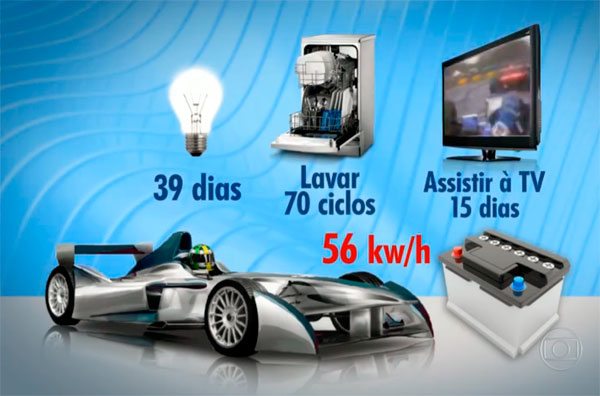Eletricidade móvel em Watts to Kilowatts sem baterias
IDTechEx
Cambridge, Reino Unido
A eliminação da bateria, de fato, a eliminação de todo o armazenamento de energia, está se tornando uma urgência ainda maior, desde eletrônicos até engenharia elétrica. As válvulas de radiador operadas remotamente da EnOcean trabalham sem baterias e a tecnologia EnOcean está sendo adaptada para fornecer watts para os transdutores e sensores múltiplos, em futuros usos da Internet da Coisa. Há potencial para bilhões de unidades anualmente, conforme detalhado no novo relatório IDTechEx, “Eliminação de baterias em eletroeletrônicos e engenharia elétrica 2018-2028”.
Autor principal do relatório, o Dr. Peter Harrop observa: “Para comemorar o 400º aniversário dos Peregrinos, que foram de Plymouth, Reino Unido para Plymouth, EUA, um barco do mesmo comprimento com velas e energia solar completará a viagem de forma autônoma sem tripulação. Usando suas velas, o navio de pesquisa autônoma Mayflower (MARS) atingirá 20 nós (37 km / h ou 23 mph). As velas serão automaticamente recolhidas quando o vento diminuir; então o seu motor elétrico movido a energia solar atingirá até 12,5 nós (23 km / h ou 14 mph). As células solares gerarão corrente suficiente que, se viajando a 5 nós (9 km / h ou 6 mph) sob a potência do motor, o alcance do navio será ilimitado, sem necessidade de bateria, dizem os designers. Algumas dessas células estarão em uma abertura de asa dobrável em mar calmo. Sim, as baterias podem ser eliminadas por uma combinação prudente de energia mecânica e elétrica, como veleiros com energia solar e hélio com energia solar empregada pelas aeronaves de hélio, baseadas no transportador independente de energia solar canadense e transportando 35 toneladas de forma autônoma. Existem carros de golfe solares elétricos puros e táxis de 3 rodas à venda. Você realmente quer jogar golfe no escuro? Abandone a bateria para o uso durante o dia quando a maior expansão de energia solar é adotada ”.
O triciclo solar Sunniclist solar, da Grécia, passa de 70 km por dia sem bateria. Poderosos carros solares da Hanergy, em 2020, usarão a extensão de GaAs solar anteriormente utilizada em aplicações aeroespaciais e militares. As baterias serão um extra, opcional para o aumento do desempenho e operação noturna. No entanto, não se trata de energia fotovoltaica quando eliminamos o armazenamento de energia de veículos e equipamentos de alta potência.
Adeus ácido chumbo
As baterias de chumbo e ácido estavam em todos os veículos puramente terrestres elétricos, bem como em híbridos, mas agora há um número cada vez maior de veículos que gerenciam a bateria de tração de íons de lítio sozinha, como o híbrido Porsche Spyder e muitos carros elétricos puros. Os chamados Circuitos de Eliminação de Bateria (BEC) estão envolvidos. Esta substituição de duas grandes baterias por uma é um primeiro passo para a independência completa das baterias.
Há muito mais por vir
Dr. Peter Harrop aconselha,
“Há um impulso de dez a cem vezes para eliminar a bateria de equipamentos eletrônicos e elétricos e em veículos terrestres, aquáticos e aéreos. Novas formas de coleta de energia têm muito menos intermitência, criando menos necessidade de baterias. Considere a energia eólica aerotransportada envolvendo drones com energia positiva, onde os ventos são consistentes e mais fortes. A energia da onda magnetostrictiva é outro exemplo. A regeneração em veículos fica mais inteligente com a eletricidade produzida a partir de suspensão e pneus. Os motores elétricos ficam mais eficientes mesmo antes dos ganhos esperados da eletrônica estrutural. Os componentes e os circuitos continuam a melhorar com o uso de energia e trabalho menores sem resfriamento com água pesada.
Até agora, poucos designers pensam em combinar três, quatro ou cinco tipos de coleta de energia. Existem mais compromissos de especificação e, até mesmo, de sistemas elétricos de menor consumo de energia
Por Dr. Peter Harrop, Presidente, IDTechEx
Fonte: Charlotte Hibbert – Marketing & Research Co-ordinator – [email protected], em 22/09/2017.
Tradução e edição: Henrique Cortez, em 26/09/2017.
Texto original:
|
Friday 22 September 2017 Mobile Electrics at Watts to Kilowatts without Batteries Cambridge, UK Mobile Electrics at Watts to Kilowatts without Batteries Battery elimination, indeed elimination of all energy storage, is moving to even higher power, from electronics to electrical engineering. EnOcean remotely operated radiator valves work at watts captured thermoelectrically without batteries and EnOcean technology is being adapted to provide watts for the multiple transducers and sensors in future Internet of Things nodes. There is potential for billions of units yearly as detailed in the new IDTechEx report, “Battery Elimination in Electronics and Electrical Engineering 2018-2028”. Leading author of the report, Dr Peter Harrop notes, “To celebrate the 400th anniversary of the Pilgrim Fathers going from Plymouth UK to Plymouth USA, a boat of the same length with sails and solar will complete the trip autonomously with no crew. Using its sails, Mayflower Autonomous Research Ship (MARS) will hit 20 knots (37 km/h or 23 mph). The sails will be automatically stowed when wind abates: then its solar-powered electric motor will achieve up to 12.5 knots (23 km/h or 14 mph). The solar cells will generate enough current that if traveling at 5 knots (9 km/h or 6 mph) under motor power, the ship’s range will be unlimited, needing no battery say the designers. Some of those cells will be on a folding wing opening in calm seas. Yes, batteries can be eliminated by prudent combination of mechanical and electrical energy harvesting like sails with solar and helium with solar employed by the Canadian Solar Ship energy independent transporter based helium aerofoils and carrying 35 tonnes autonomously. There are pure electric solar golf cars and 3 wheel taxis on sale. Do you really want to play golf in the dark? Abandon the battery for daytime use when highest-efficiency expanding solar is adopted.” The Sunniclist solar 3 wheeler from Greece goes 70 km a day without a battery at 690W peak. Powerful Hanergy solar cars in 2020 will use extending GaAs solar previously used in aerospace and military applications. Batteries will be an optional extra for performance boosting and night time operation. However, it is not all about photovoltaics when we eliminate energy storage from high power vehicles and equipment. Goodbye lead acid Lead acid batteries were in all pure electric land vehicles, as well as hybrids, but now there are a rapidly increasing number of vehicles managing with the lithium-ion traction battery alone such as the Porsche Spyder hybrid and many pure electric cars. So-called Battery Elimination Circuits (BEC) are involved. This replacement of two large batteries with one is a first step towards complete independence from batteries. Cars and emission Meanwhile, at the University of Wisconsin Madison, a toy car has uses triboelectric tires to flash LEDs without a battery raising the intriguing prospect of regular cars making hundreds of watts that way. Lord Drayson, former minister in the UK government, developed a pure electric racing car that inspired the later Formula E. Continuing the environmental theme but at low power he has designed and sells the first volume product powered by ambient radio waves and no energy storage. As a surrogate for city pollution in general it monitors carbon monoxide because this requires little power. No matter that it is not super accurate and it does not always work, he argues that it acts as a useful monitor of the unacceptable pollution in cities like London where under 1% of cars and buses are pure electric and up to 10,000 people die unnecessarily every year from particulates and acid gases mainly emanating from traditional vehicles. Carbon dioxide boosting global warming is inadequately controlled as well. This study again shows how compromises in specification are more frequent nowadays in order to get rid of batteries and make things hassle free and affordable, whether we are talking microwatts or kilowatts. Much more to come Dr Peter Harrop advises, “There is ten to one hundred fold improvement to come in eliminating batteries from electronic and electrical equipment and in vehicles land, water and air. New forms of energy harvesting have much less intermittency creating less need for batteries. Consider Airborne Wind Energy involving energy positive tethered drones up where the winds are consistent and stronger. Magnetostrictive wave power is another example. Regeneration in vehicles gets cleverer with electricity produced from suspension and tires. Electric motors get more efficient even before gains expected from structural electronics. Components and circuits continue to improve by using lower power and work without heavy water cooling. As yet, few designers even think of combining three, four or five types of energy harvesting. There are more specification compromises and even lower power consumption electrical systems to assist. Some energy harvesting is becoming viable at ten times the power – consider expanding GaAs solar becoming affordable and replacing fixed single-crystal silicon panels on a vehicle: three times the efficiency and up to four times the area. Toyota and IFEVS have just announced super-efficient small wind turbines to erect when vehicles are stationary (hotel facilities and task performance with no battery) and on boats even when under way. Usually the improvements leading to battery elimination are multiplicative: they do not simply add.” |
|
First conference ever IDTechEx is staging the world’s first conference and exhibition on “Energy Independent Electric Vehicles” 27-28 September at the Technical University of Delft, Netherlands. Some have no energy storage. This event will embrace the commercial opportunity and technology roadmap of the vehicles by land water and air and their enabling technologies. It is staged by analyst IDTechEx which has the only comprehensive reports and consultancy on EIVs and their technologies such as structural electronics, triboelectric and 6D motion energy harvesting and extreme light weighting. The overview report is, “Energy Independent Electric Vehicles Land, Water, Air 2017-2037”. About IDTechEx IDTechEx guides your strategic business decisions through its Research and Events services, helping you profit from emerging technologies. We provide independent research, business intelligence and advice to companies across the value chain based on research activities and methodologies which provide data sought by business leaders, strategists and technology scouts to aid their critical business decisions. To discuss your needs please contact us at [email protected] or see www.IDTechEx.com. Contact: Charlotte Hibbert Marketing & Research Co-ordinator UK: +44-(0)1223-810286 |










